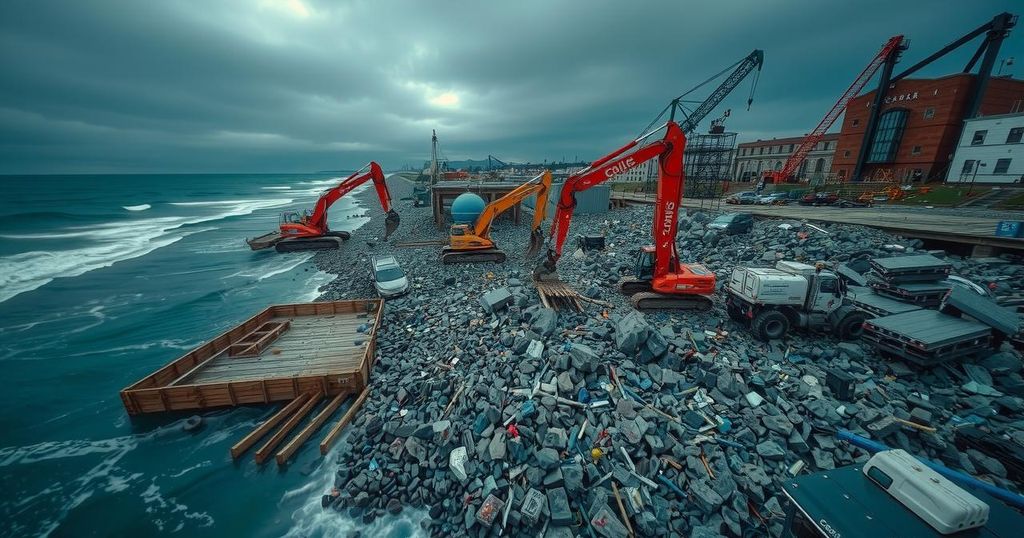Reconstruction and Legal Ramifications Following the 2010 Chile Earthquake

The 2010 Chile earthquake triggered extensive recovery efforts led by military personnel, with subsequent international aid being requested after initial reluctance. Reconstruction progressed with provisional housing and infrastructure repair, but many displaced individuals still lacked permanent homes a year later. Legal action followed against officials for negligence in tsunami warnings, leading to settlements for affected families. Disaster preparedness improvements were noted during subsequent seismic events, reflecting lessons learned from the tragic incident.
The earthquake that struck Chile on February 27, 2010, with its epicenter in the Biobío region, led to an immediate mobilization of over 10,000 military personnel to assist in recovery efforts and maintain order in the affected areas. Initially, President Michelle Bachelet was reluctant to seek international assistance, yet she later requested aid from the United Nations and accepted offers of support from the United States, the European Union, and various Asian nations. Despite facing criticism regarding her hesitation to deploy the military, especially in light of historical associations with the Pinochet regime, efforts for recovery progressed as Sebastián Piñera assumed the presidency on March 11 amidst ongoing aftershocks. By June 2010, provisional housing solutions were implemented for those displaced, and subsidies were granted to those who lost their homes. However, a year post-disaster, many affected individuals were still without permanent housing, particularly in coastal regions where the tsunami caused severe disruptions to fishing and tourism. Nevertheless, infrastructure improvements, including renovations to highways and airports, were largely completed by mid-2014, with a report in July 2013 indicating that approximately 74% of the supported home building projects were finalized. The preparedness measures established in the aftermath of the 2010 earthquake have been credited with mitigating the impact of a subsequent magnitude-8.2 quake and tsunami in northern Chile in April 2014. Evacuation drills, which involved approximately half a million participants in Valparaíso in May 2012, were instrumental during the 2014 tsunami warning, resulting in the successful evacuation of close to a million people. The disaster also triggered legal ramifications. In May 2012, eight officials, including the head of the National Emergency Office and the naval Hydrographic and Oceanographic Service’s director, were prosecuted for negligence in failing to heed tsunami warnings and inform coastal residents adequately. Additionally, investigations revealed attempts to manipulate documentation regarding these warnings. By April 2016, a settlement was reached wherein the six remaining defendants agreed to pay compensation to the families of tsunami victims, alongside a government obligation to compensate families significantly affected by the tragedy.
The 2010 Chile earthquake was a significant seismic event that had profound effects on the country, highlighting vulnerabilities in disaster preparedness and response. The magnitude of the quake emphasized the need for immediate and effective governmental action in disaster recovery and management. The tsunami following the earthquake exacerbated the devastation, particularly in coastal areas reliant on industries such as fishing and tourism. The government’s initial response and the eventual legal challenges against officials stemmed from criticisms around negligence in tsunami response protocols, which has raised ongoing discussions about disaster readiness in Chile.
In summary, the aftermath of the 2010 Chile earthquake revealed both immediate and longer-term challenges in reconstruction and legal accountability. By promoting evacuation drills and establishing effective recovery frameworks, Chile has taken significant steps towards enhancing disaster preparedness. Nevertheless, the legal proceedings against officials underscore the importance of accountability in government response to such natural disasters, ensuring that lessons are learned for future contingencies.
Original Source: www.britannica.com






